“Time and Tide wait for no man”. We’ve all heard that saying and have no doubt experienced the frustration of not being able to get to our destination because the tide has turned and we are battling against it. The subject of Tides is a complex one and I am not going to venture into its intricacies, but look at a few of the world’s tides – some of the most interesting ones.
Tides are the rise and fall of sea levels caused by the combined effects of gravitational forces exerted by the Moon, Sun and rotation of the earth. They can be divided into types:
- Semi-diurnal –locations experience 2 nearly equal high and low tides each day.
- Diurnal – locations experience only one high and one low tide each day.
- Mixed – locations experience either one or two uneven tides a day.
As we know, two high waters on a given day are typically not the same height and this daily inequality is not consistent, hence the need for tide tables about which all users of the sea must have a good understanding. The height of tides also varies throughout a month. Approximately twice a month, around new moon and full moon, when the relative position of the sun, moon and earth form a line, (known as syzygy) the tidal force due to the sun reinforces that due to the moon and the tide’s range will be at its maximum. This is the Spring tide (named after the verb to spring meaning jump or burst forth, not the season). When the moon is at its first or third quarter the sun and moon are separated by 90 degrees and the solar tidal force partially cancels out the moon’s, so the tidal range is at its minimum and is called a neap tide (an Anglo-Saxon word meaning without power). Additionally, when the sun and moon are at perigee and are as close to the earth as they can get, they exert a greater gravitational influence and produce greater tidal ranges. Alternatively, when they are as far from the earth as they can get, (apogee), tidal ranges are smaller.
The sea’s underwater depth (or bathymetry) at a particular location and the shape of a certain stretch of coastline can also have an effect on the time and height of a tide.
The highest tides in the world (sometimes called King Tides or Macro Tides)
Bay of Fundy – Canada
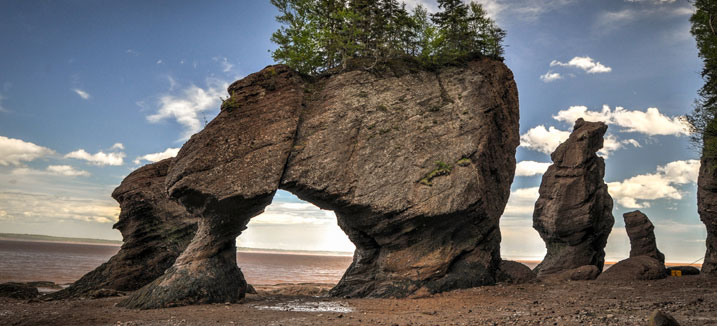
The bay separates New Brunswick from Nova Scotia and at some times of the year the difference between high and low tide is 16.3 metres, taller than a three story building. The tidal heights here have been measured for many decades and the highest ever recorded was in 1869 during a tropical cyclone, when a water level of 21.6 metres was measured resulting from the combination of high winds, abnormally low atmospheric pressure and a spring tide.
Traditional Mi’kmaq folklore states that the tides in the Bay are caused by a giant whale splashing in the water; oceanographers attribute it to tidal resonance resulting from the timing of waves. Tidal bores can be seen – a rare phenomenon, when incoming tides overwhelm a river’s flow. These currents can create waves measuring 12 feet high.
Ungava Bay – Quebec
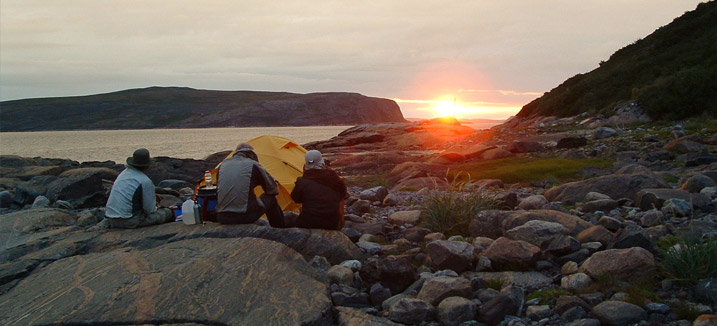
The bay has only been measured in recent years and the tide is higher on average than those in the Bay of Fundy, estimated at around 17 metres, although it is not believed to have reached its rival’s maximum height. The bay is roughly oval-shaped and is generally fairly shallow. Bathymetric studies suggest it may be the remnant of an impact crater. Attempts have been made to develop tidal power in the bay but the harsh climate and the fact that the bay is ice-free for only a small part of the year, has made this difficult. Much wider than the Bay of Fundy, Ungava Bay’s water volume can change with alarming rapidity.
These two locations rival each other for the world record and the Canadian Hydrographic Service finally declared it a statistical tie.
King Sound near Derby – Western Australia
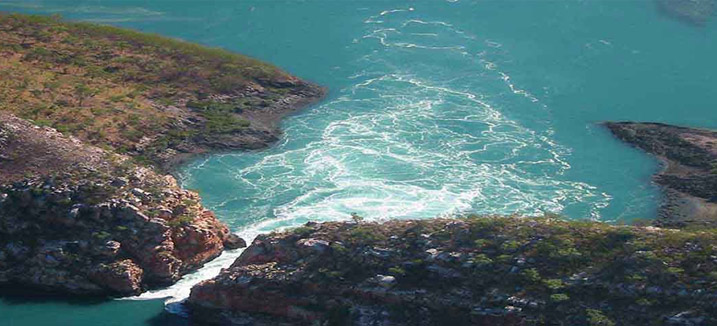
A large gulf which expands from the mouth of the Fitzroy River and opens into the Indian Ocean, it has the highest tides in Australia and amongst the highest in the world reaching a maximum tidal range of 11.8 metres. King Sound is an extension of the wide, shallow north-west continental shelf. When the water comes in from deeper areas it is constricted and squeezed and because the volume of water is being constrained in this shallow region, the tide is amplified as it moves towards the shore. Then, because the channel at King Sound is narrow, the water is constrained at both sides and forced up the channel.
Derby is proud of its strange tides and holds special events to celebrate them including King Tide Day and the Boab Festival which includes a Mud Football competition. When the tide comes in it does so at walking pace; often people are caught out on local beaches and have to make a run for it. The fast moving currents create weird, supernatural-like effects around the area, such as horizontal waterfalls and whirlpool clusters.
Gulf of Khambhat – India
Like many others on this list the Gulf is funnel-shaped and has the perfect dimensions to force a rapid rise and fall in the water level as it enters and exits from the Arabian Sea. The Gulf is 120 miles wide at its mouth and narrows to just 15 miles. It also experiences monsoon winds which help to build the tidal range to in excess of 12 metres. The combination of tide, winds, river deltas, shifting sand and rapid currents create one of the most difficult inland seas to navigate in the world.
Saltstraumen – Norway
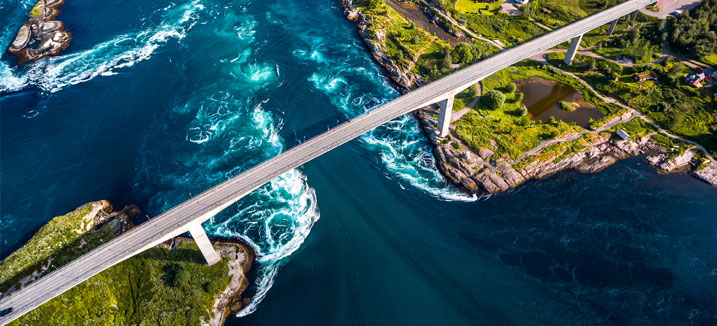
Located beneath the Borvasstindene Mountains, Saltstraumen claims to be the world’s fastest tide. 520 million cubic yards of water are forced into a 3 km by 0.15km channel. Often turbulent waters result in murky conditions, but here in the Saltstraumen Strait the waters are crystal clear thanks to being flushed out to sea every six hours. There are many whirlpools which can spread to 9m in diameter and carve cones 4.5m deep. It is also home to an abundance of fish making it a popular destination for divers.
Skookumchuck Narrows – British Columbia
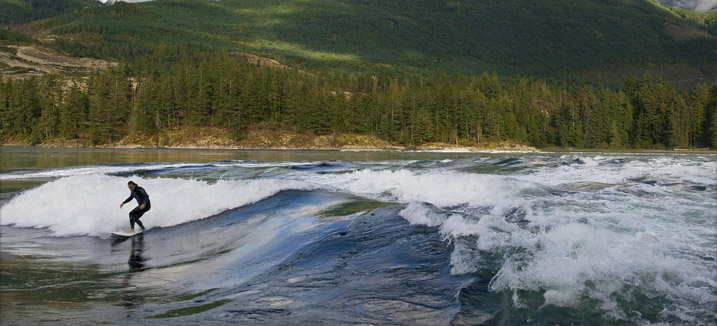
The Narrows form the entrance of Sechelt Inlet on British Columbia’s Sunshine Coast in Canada. Named after the Chinook Indian slang for strong water, these narrows have among the fastest tides on the planet. Two hundred billion gallons of water enter Sechelt Inlet each day at speeds that can reach more than 20mph, which makes it probably the world’s second fastest tide. At peak flows whitecaps and whirlpools can be seen and the tidal patterns keep the water moving at virtually all times.
Notable Bore Tides
Bore tides occur all over the world but only a few are large enough to make a name for themselves.
Anchorage’s bore tide is a huge wave or series of waves that advance down the Turnagain Arm in a wall of water up to 10 feet high and travelling up to 15 mph – a dramatic show of nature’s power. It takes about a 8.2m tidal differential for a bore to form in Turnagain Arm. Usually bore waves run up low-lying rivers in southerly latitudes, but this is the only one that occurs in the far north, bordered by mountains. It is the most unique and most geologically dramatic bore tide in the world. It is also incredibly accessible as you can view it by road along its entire 40 – 50 mile length. Harbour seals often ride the bore and Beluga whales can be spotted as the water gets deeper.
Qiantang River – China
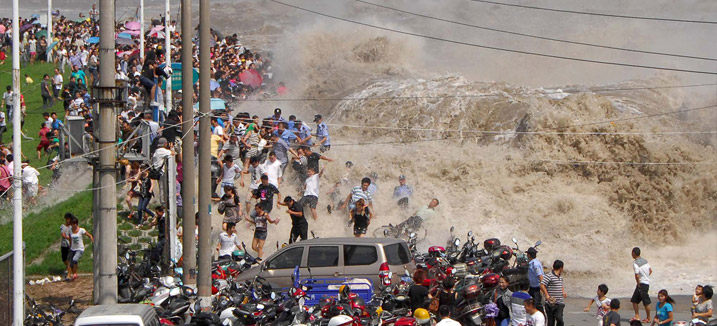
The river is the biggest in Zhejiang Province. Its extraordinary surging tide is a world-renowned natural wonder, caused by the peculiar bottleneck shape of Hangzhou Bay which makes it easy for the tide to come in, but difficult for it to ebb. Annually millions of people flock there to watch it on the 18th day of the 8th lunar month. When the surging tide comes in the water can rise up to a height over 9m, with a noise sounding like thunder. This year (2016), it was affected by the super moon, resulting in stronger bores than ever, injuring spectators and surging over the banks.
Strangford Lough – Northern Ireland
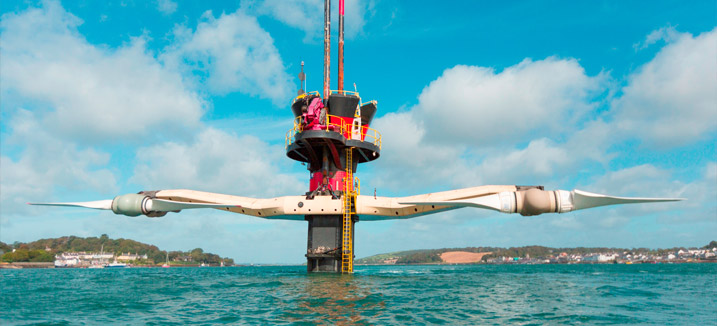
The name Strangford references the swift, strong currents located at the mouth of the inlet. The lough is not the highest or fastest tide but is notable as the site of the first major tidal stream turbine. An underwater “windmill” named the SeaGen converts the strong current into energy and can supply power for 1,500 homes. Strangford is the largest lough or bay in the British Isles and the surrounding landscape is amongst the most picturesque, especially when viewed from Delamont Country Park or from one of the several coastal nature reserves.
Severn Estuary – Great Britain
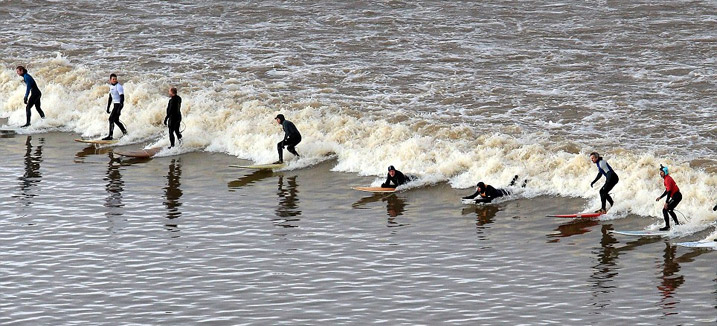
The River Severn is Britain’s longest river and the estuary has one of the highest tidal ranges in the world – about 15 metres. Its funnel shape, tidal range and the underlying geology of the rock, gravel and sand, produce strong tidal streams and high turbidity, giving the water a markedly brown colouration. The tidal bore here is among the most spectacular on earth. The bore behaves differently in different stretches of the river. In the lower, wider parts it is a slight roller, more noticeable in the deeper channels. In the upper, narrower reaches the bore advances in a series of waves that move upstream, overcoming two and sometimes three weirs, before finally petering out. Historically the bore has been a danger to shipping visiting the docks at Gloucester, but nowadays it is of more interest to surfers and canoeists who attempt to ride the waves. On days when a large bore is expected, hundreds of enthusiasts may accumulate, waiting for the waves to arrive.
There are about 260 bores each year but the largest occur around the times of the equinoxes. The bore’s height can be increased by a strong southwest or west wind, low barometric pressure and well scoured channels in the estuary. The wind direction out at sea is more significant than the local air flow. Many hazards can occur in high water conditions, including floating trees, collapsing portions of river bank, overhanging branches and even dead animals. The huge tidal range and the high level or surrounding industry and population have made the Severn Estuary the focus for tidal energy schemes, using a Severn Barrage. It has the potential to generate more renewable electricity than all other UK estuaries and could create up to 5% of the UK’s electricity, but environmental groups have strongly opposed the schemes.
Other interesting tides
Southampton – United Kingdom
Here there is a double high water caused by the interaction between the region’s different tidal harmonics; the east/west orientation of the English Channel and the fact that when it is high water at Dover, it is low water at Land’s End (300 nautical miles away). Many people believe that the two high waters are caused by the flow of water around the Isle of Wight. This is not correct, but the Isle of Wight is responsible for the “Young Flood Stand”, which describes the pause of the incoming tide about three hours after low water.
Firth of Forth- Scotland
Due to the makeup and topography of the estuary of the River Forth, the coast has twice as many tides each day than you would expect. When the tide is coming in, after about three hours, it falls back couple of feet and then resumes its forward flow. The same happens on the ebb tide. Legend has it that St Mungo was sailing on the river when his vessel ran aground on an ebb tide. Using his miraculous powers he made the water flow back in, to free the boat and allow him to continue his journey. Oh that we were able to do that!
Finally
There are many famous quotes using references to tides. Here is one of my favourites:
“A rising tide doesn’t raise people who don’t have a boat. We have to build the boat for them. We have to give them the basic infrastructure to rise with the tide”.
Rahul Gandhi